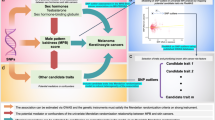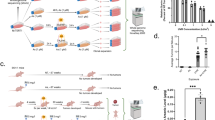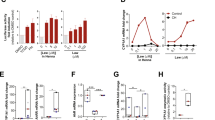Abstract
DELLA PORTA et al. 1 first reported the induction of melanotic tumours in the skin of Syrian golden (agouti) hamsters after topical applications of 7,12-dimethylbenz(a)anthracene (DMBA). This finding was afterwards confirmed by these and other investigators2–5. Ghadially and Barker5 have postulated that the melanotic lesions arise from dermally situated perifollicular networks of melanocytes intimately associated with certain hair follicles. They suggest that the proximity of dermal melanocytes to sebaceous glands of hair follicles renders them especially vulnerable to the action of carcinogens topically applied to the skin. Recently, Illman and Ghadially6 have reported the induction of melanotic tumours in the general body skin of white (‘partial albino’) Syrian hamsters during repeated topical applications (22 weekly treatments) of 2 per cent DMBA in acetone. It is noteworthy that white hamsters characteristically possess a white hair coat, and grossly detectable pigmentation is restricted to the skin of the ears, perineum and genitals; a darkening of eye colour may occur with advancing age7,8. Whiteness of hair coat is a genetically determined trait inherited as a simple Mendelian recessive7,8. The purpose of this communication is to report observations made in our laboratory on the occurrence of melanotic lesions in white hamsters treated with DMBA.
This is a preview of subscription content, access via your institution
Access options
Subscribe to this journal
Receive 51 print issues and online access
$199.00 per year
only $3.90 per issue
Buy this article
- Purchase on Springer Link
- Instant access to full article PDF
Prices may be subject to local taxes which are calculated during checkout
Similar content being viewed by others
References
Della Porta, G., Rappaport, H., Saffiotti, U., and Shubik, P., Amer. Med. Assoc., Arch. Path., 61, 305 (1956).
Shubik, P., Pietra, G., and Della Porta, G., Cancer Res., 20, 100 (1960).
Horning, E. S., CIBA Found. Colloq. Endocrinol., 12, 22 (1958).
Ghadially, F. N., J. Path. Bact., 77, 277 (1959).
Ghadially, F. N., and Barker, J. F., J. Path. Bact., 79, 263 (1960).
Illman, O., and Ghadially, F. N., Brit. J. Cancer, 14, 483 (1960).
Whitney, R., J. Hered., 49, 181 (1958).
Robinson, R., Heredity, 13, 165 (1959).
Suntzeff, V., Carruthers, C., and Cowdry, E. V., Cancer Res., 7, 439 (1947). Bock, F. G., ibid. (in the press).
Szabó, G., Anat. Rec., 137, 170 (1960).
Author information
Authors and Affiliations
Rights and permissions
About this article
Cite this article
QUEVEDO, W., CAIRNS, J., SMITH, J. et al. Induction of Melanotic Tumours in the White (‘Partial Albino’) Syrian Hamster. Nature 189, 936–937 (1961). https://doi.org/10.1038/189936a0
Issue Date:
DOI: https://doi.org/10.1038/189936a0
This article is cited by
-
Induction of pigmentary changes in the skin of the mongolian gerbil by chemical carcinogens
Experientia (1968)
-
Differential Chemical Carcinogenesis in Three Distinct Melanocyte Systems of Syrian (Golden) Hamsters**From the Departments of Dermatology, Wayne State University College of Medicine, Detroit Receiving Hospital, Detroit, and Veterans Administration Hospital, Dearborn, Michigan.
Journal of Investigative Dermatology (1965)
-
Über die Sensibilität des Hamstermelanoms gegenüber Röntgenstrahlen, Kälte, Cytostatica und immunbiologischen Einflüssen
Archiv für Klinische und Experimentelle Dermatologie (1963)
Comments
By submitting a comment you agree to abide by our Terms and Community Guidelines. If you find something abusive or that does not comply with our terms or guidelines please flag it as inappropriate.



